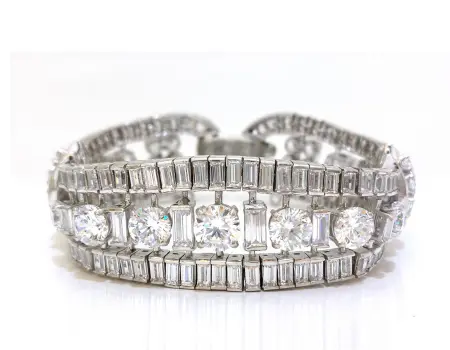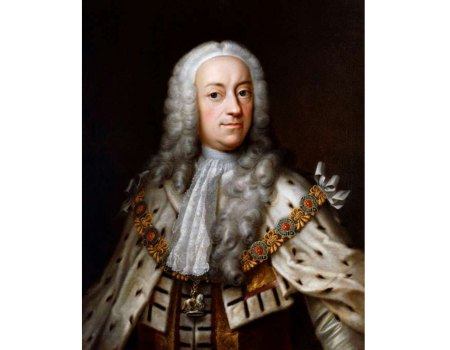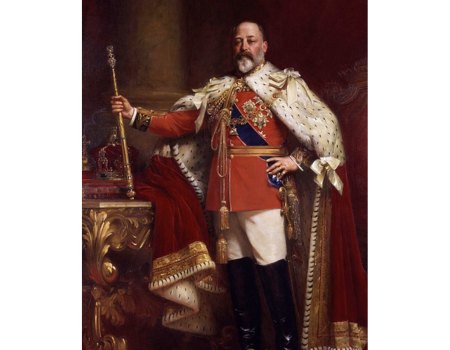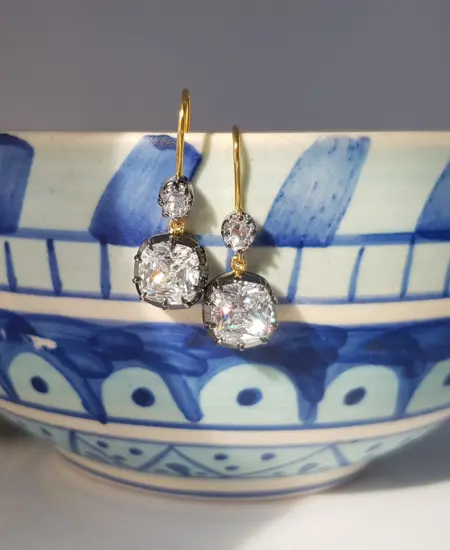Jewelry has always been a symbol of elegance and timeless beauty. While contemporary designs have their own appeal, vintage jewelry holds a special place in the hearts of collectors and enthusiasts alike. Each piece of vintage jewelry tells a unique story and reflects the craftsmanship and style of a particular era. In this blog, we will delve into the charm and history behind three significant vintage jewelry eras: Georgian, Victorian, and Edwardian.
1. Georgian Era (1714-1837)
The Georgian era marked a time of opulence and extravagance in jewelry design. Named after the British monarchs George I to George IV, this era saw the rise of elaborate and intricate pieces. The jewelry of this period was heavily influenced by nature, incorporating motifs such as flowers, leaves, and birds. Diamonds, coloured gemstones, and pearls were the preferred choices for adornment.
One distinctive characteristic of Georgian jewelry is the use of foil-backed gemstones, which enhanced their brilliance in candlelight. The delicate craftsmanship of the era is evident in the intricate filigree work, cannetille, and open-back settings. Mourning jewelry also gained popularity during this period, with black and white designs symbolising grief and remembrance.
2. Victorian Era (1837-1901)
The Victorian era, named after Queen Victoria, brought about significant changes in jewelry design. This era can be further divided into three distinct periods: the Early Victorian or Romantic period, the Mid-Victorian or Grand period, and the Late Victorian or Aesthetic period.
During the Early Victorian period, sentimental jewelry flourished. Pieces were often personalised with lockets containing photographs or strands of hair from loved ones. Symbolism played a crucial role, with motifs like hearts, flowers, and snakes representing love, eternity, and wisdom. The use of gemstones such as amethyst, garnet, and opal became popular during this time.
In the Mid-Victorian period, mourning jewelry reached its peak. Black jet, onyx, and enamel were used extensively to create sombre and elaborate designs. After the death of Prince Albert, Queen Victoria's husband, mourning jewelry became a fashion statement, and black became the predominant colour. However, as the period progressed, brighter colours and designs emerged, reflecting a shift towards more joyful and celebratory pieces.
The Late Victorian period embraced the influences of the Arts and Crafts movement and the arrival of precious metals from colonies. Jewelry designs became more intricate and detailed, with the incorporation of pearls, diamonds, and coloured gemstones. The use of feminine motifs such as bows, ribbons, and lace created a sense of delicacy and elegance.
3. Edwardian Era (1901-1910)
The Edwardian era, named after King Edward VII, was characterised by refined and elegant jewelry designs. This period marked the transition from heavy Victorian styles to more delicate and ethereal designs. Platinum, with its strength and ability to hold delicate gemstone settings, became the metal of choice.
Edwardian jewelry showcased a love for lace-like designs, featuring intricate filigree work, milgrain detailing, and openwork patterns. The use of diamonds and pearls was prominent, reflecting the desire for a softer and more feminine aesthetic. Pieces were often adorned with motifs inspired by nature, such as garlands, ribbons, and bows. The introduction of new gemstones, such as aquamarine and peridot, added a touch of colour to the designs.
The Edwardian era also witnessed the popularity of Art Nouveau and Belle Époque styles, characterised by flowing lines, sinuous curves, and nature-inspired motifs. The elegance and sophistication of Edwardian jewelry continue to captivate collectors and enthusiasts to this day.

Art Nouveau Era (1890-1910)
The Art Nouveau era was a period of artistic revolution, and its influence extended to the world of jewelry design. This era, which lasted from the late 19th century to the early 20th century, celebrated the beauty of nature and organic forms. The term "Art Nouveau" is French for "new art," and it sought to break free from the rigid constraints of academic art and embrace a more fluid and imaginative style.

Art Deco Era (1920-1939)
The Art Deco era was a stark departure from the organic and flowing designs of the Art Nouveau period. This period, which emerged in the 1920s and extended through the 1930s, was characterized by a bold and geometric aesthetic. The term "Art Deco" is derived from the 1925 Exposition Internationale des Arts Décoratifs et Industriels Modernes held in Paris, where this style gained widespread recognition.

Contemporary Era (1960s-Present)
The Contemporary era in jewelry design encompasses the period from the 1960s to the present day. Unlike the previous vintage eras that drew inspiration from specific historical styles, the Contemporary era is characterized by its diversity and eclecticism. This period celebrates individuality and creativity, with jewelry artists exploring various materials, techniques, and concepts to push the boundaries of traditional jewelry design.
Vintage jewelry has an undeniable charm that captivates collectors and enthusiasts. Each era brings forth its own unique characteristics, design elements, and notable pieces, showcasing the craftsmanship and style of its time. In this blog, we will delve into the intricacies of all the significant vintage jewelry periods: Georgian, Victorian, Edwardian, Art Nouveau & Art Deco.
The Georgian era is a testament to opulence and intricacy in jewelry design. This period, named after the British monarchs from George I to George IV, draws inspiration from the natural world. Georgian jewelry features elaborate motifs such as flowers, leaves, and birds, showcasing the craftsmanship of the era. The preferred gemstones of the time were diamonds, colored gemstones, and pearls, which added a touch of timeless elegance to each piece. Notable characteristics include delicate filigree work, cannetille detailing, and open-back settings that allow light to enhance the brilliance of the gemstones. One distinctive feature of Georgian jewelry is the use of foil-backed gemstones, which intensify their sparkle in candlelight. Notable pieces from this era include sentimental jewelry, such as lockets and mourning jewelry, which often featured black and white designs symbolising grief and remembrance.
Victorian Era (1837-1901)

The Victorian era is a rich tapestry of jewelry design, divided into three periods: Early Victorian or Romantic, Mid-Victorian or Grand, and Late Victorian or Aesthetic. Each period showcases unique characteristics and design elements. During the Early Victorian period, sentimental jewelry flourished. Lockets containing photographs or strands of hair from loved ones were popular, allowing wearers to carry cherished memories close to their hearts. Symbolism played a significant role, with motifs like hearts, flowers, and snakes representing love, eternity, and wisdom. The use of gemstones such as amethyst, garnet, and opal was prominent during this time. In the Mid-Victorian period, mourning jewelry reached its peak. Black jet, onyx, and enamel were extensively used to create sombre and elaborate designs. Mourning jewelry became a fashion statement after the death of Prince Albert, Queen Victoria's husband, and black became the predominant colour. However, as the era progressed, brighter colours and designs emerged, reflecting a shift towards more joyful and celebratory pieces. The Late Victorian period embraced intricate craftsmanship and the use of pearls, diamonds, and coloured gemstones. Feminine motifs like bows, ribbons, and lace created a sense of delicacy and elegance in the designs.
The Edwardian era, named after King Edward VII, represents refined and elegant jewelry design. Platinum, known for its strength and ability to hold delicate gemstone settings, became the metal of choice. Edwardian jewelry exudes a light and airy aesthetic, with intricate filigree work, milgrain detailing, and openwork patterns reminiscent of lace. Diamonds and pearls were the centrepieces of many designs, showcasing a desire for a softer and more feminine look. Motifs inspired by nature, such as garlands, ribbons, and bows, adorned numerous pieces, reflecting the romantic and whimsical sensibilities of the era. The Edwardian era also witnessed influences from the Art Nouveau and Belle Époque styles, characterised by flowing lines, sinuous curves, and nature-inspired motifs. Notable pieces from this era include exquisite diamond and pearl tiaras, delicate pendant necklaces, and intricate brooches that continue to captivate jewelry enthusiasts.
Art Nouveau Era (1890-1910)

Art Nouveau jewelry designs were characterized by sinuous lines, flowing curves, and motifs inspired by nature. Delicate flowers, vines, leaves, and insects adorned these pieces, creating a sense of whimsy and enchantment. Gemstones like opals, moonstones, and amethysts were popular choices, as their iridescence and color play complemented the ethereal nature of Art Nouveau designs.
Art Nouveau jewelry often featured a mix of materials, including glass, enamel, and semi-precious gemstones, which allowed artists to experiment with vibrant colors and textures. Renowned jewelry designers such as René Lalique and Louis Comfort Tiffany were instrumental in popularizing the Art Nouveau style.
Art Deco Era (1920-1939)

Art Deco jewelry embraced clean lines, symmetry, and geometric shapes, drawing inspiration from modern industrial design and the discovery of King Tutankhamun's tomb, which sparked an interest in Egyptian motifs. Diamonds, rubies, sapphires, and emeralds were highly favored, and the use of platinum was prevalent due to its strength and ability to create intricate and delicate settings.
Jewelry from the Art Deco era featured bold and eye-catching designs, often incorporating vibrant colors through the use of gemstones and enamel. The emphasis on streamlined elegance and modernity appealed to the liberated spirit of the Roaring Twenties and the Art Deco era remains an enduring influence in jewelry design to this day.
Contemporary Era (1960s-Present)

Contemporary jewelry often breaks away from conventional norms, embracing unconventional materials and innovative craftsmanship. Artists experiment with a wide range of materials, including stainless steel, titanium, wood, plastic, and even recycled materials. This emphasis on non-traditional materials enables jewelry designers to create pieces that are not only visually striking but also environmentally conscious.
In terms of style, contemporary jewelry is incredibly diverse, with some designers favoring minimalist and sleek designs, while others opt for bold and avant-garde creations. The advent of technology, such as 3D printing and computer-aided design, has further expanded the possibilities for contemporary jewelry, enabling intricate and complex forms to be brought to life.
In conclusion, vintage jewelry from each era possesses a timeless allure. Each era exhibits distinct characteristics and design elements that make them truly remarkable. From the intricate craftsmanship and nature-inspired motifs of Georgian jewelry to the sentimental symbolism and elaborate mourning pieces of the Victorian era, and the refined elegance and intricate filigree work of Edwardian jewelry, each period offers a unique glimpse into the artistic expression and style of its time. Exploring vintage jewelry allows us to appreciate the history, craftsmanship, and timeless beauty of these remarkable pieces and the stories they tell from a bygone era.














